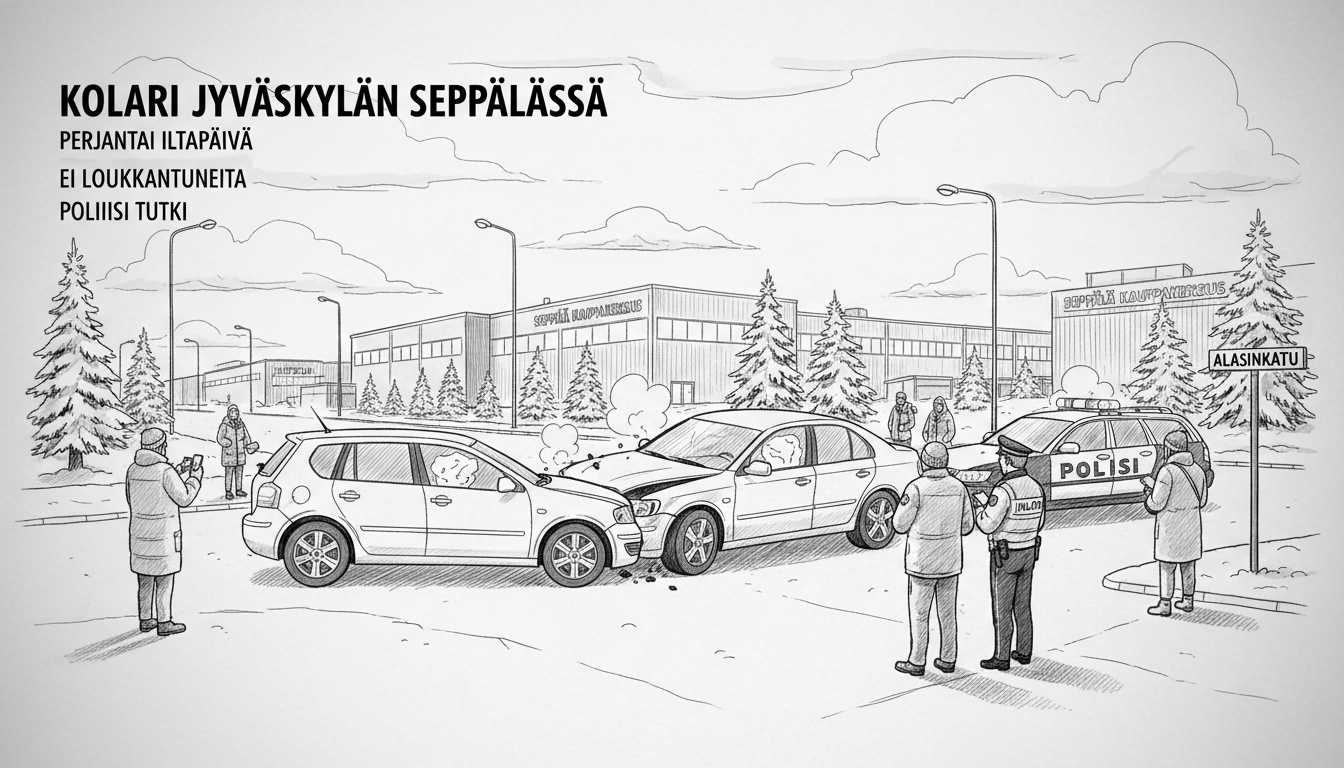A collision between two passenger cars occurred in Jyväskylä's Seppälä district during the late afternoon hours on Friday. The accident took place on Alasinkatu street before 6:00 PM, prompting an emergency response from rescue services.
No injuries resulted from the traffic incident according to official reports. The rescue department confirmed the collision happened at relatively slow urban speeds. Both vehicles sustained body damage in the impact. The accident did not create significant disruptions for other traffic in the area.
Police are currently investigating the circumstances surrounding the collision. They will determine the exact sequence of events that led to the accident on this residential street.
This type of minor traffic incident reflects common urban driving challenges in Finnish cities during evening commutes. Jyväskylä, as central Finland's largest urban center, experiences typical rush hour congestion that can contribute to such collisions.
Finnish traffic safety records generally show positive trends in recent years. The country's comprehensive driver education system and strict traffic enforcement contribute to relatively low accident rates compared to European averages. Still, urban areas naturally see more frequent minor incidents like this Seppälä collision.
Local residents note that Alasinkatu serves as an important connector road in the Seppälä neighborhood. The street typically carries moderate traffic volumes throughout the day, with increased activity during peak commuting hours.
Emergency response times in central Finnish urban areas generally meet national standards. Rescue services typically arrive quickly at accident scenes within city limits, as demonstrated in this Friday incident.
For international readers, it's worth noting that Finnish traffic safety systems prioritize preventive measures. The country's Vision Zero initiative aims to eliminate all traffic fatalities and serious injuries while increasing safe, healthy, equitable mobility for all.
Minor accidents like this Jyväskylä collision rarely make international news, but they represent the daily reality of urban transportation systems worldwide. The efficient response and minimal consequences in this case demonstrate effective local emergency services and generally responsible driving behavior.
What happens next in such cases? Finnish police complete their investigation, insurance companies assess damages, and vehicles undergo repairs. The entire process typically proceeds smoothly given Finland's well-established systems for handling traffic incidents.

